FIND US ON
SUBSCRIBE TO OUR MAILING LIST!
Enter your email address below to subscribe to our mailing list to receive exclusive offers and to be the first to know about new tools.
Enter your email address below to subscribe to our mailing list to receive exclusive offers and to be the first to know about new tools.
In the fast-paced world of construction and renovation, efficiency isn’t just a goal; it’s a necessity. With deadlines looming and budgets tightening, finding ways to streamline operations can make a significant difference. One innovation that makes waves across sites is using interchangeable plastic skimming blades. Let’s delve into how these tools are transforming work processes and why they might be the game-changers your project needs.
Plastic interchangeable skimming blades are a modern take on traditional plastering and finishing tools. Designed with flexibility and efficiency, these blades are made from durable, lightweight plastics that offer excellent performance and ease of handling. The interchangeable feature allows workers to quickly swap out blades of different sizes and shapes depending on the task at hand without switching entire tools.
Flat blades are the most versatile and commonly used interchangeable skimming blades. They feature a smooth, flat surface without any serrations or notches. This blade type is perfect for applying and smoothing plaster, drywall compound, and other finishing materials. Flat blades are designed to spread materials evenly over large surfaces, making them ideal for a sleek, uniform finish. The lack of texture on the blade helps minimise drag and avoid introducing air bubbles into the material, which is crucial for a flawless finish.
Serrated blades are distinguished by their tooth-like edges, which are excellent for specific tasks such as texturing or combining materials that require mixing before application. The serrated edge helps create patterns in the plaster or stucco, adding a decorative finish or functional texture to a surface. These blades can also be used to break up material that has started to set slightly, ensuring a more consistent mix. The serrations vary in size and spacing, allowing for different texture effects and functional uses depending on the job’s requirements.
Notched blades are typically used for tiling and flooring tasks. They feature a series of notches or cuts along the edge, designed to apply adhesives in a controlled and uniform manner. The size and spacing of the notches can vary, and they can be tailored to different types of tile or flooring jobs. Smaller notches might be used for precision work on smaller mosaic tiles, while larger notches could be better suited for laying down adhesive for larger ceramic tiles. The primary function of the notched blade is to create a ridged pattern in the adhesive, which helps form a stronger bond as tiles are laid down, ensuring they are securely fixed and evenly aligned.
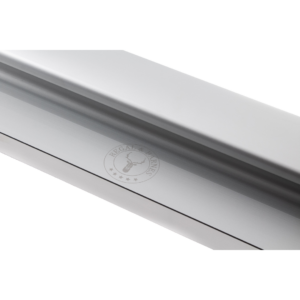
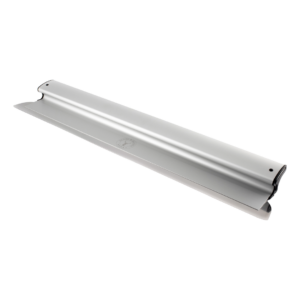
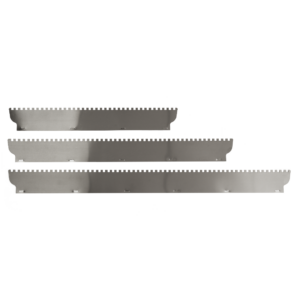
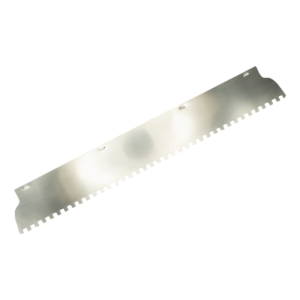
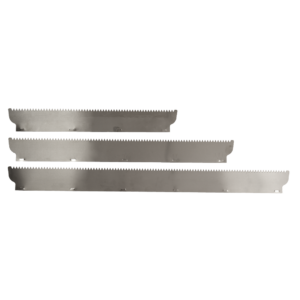
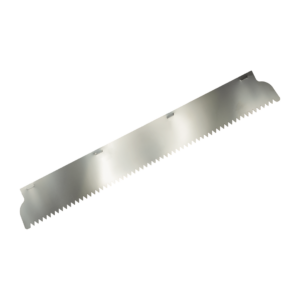
Plastic is significantly lighter than traditional materials like stainless steel. This weight reduction reduces worker fatigue, allowing longer work periods without the physical strain associated with heavier tools.
The interchangeable nature of these blades means that one handle can support various blade types. The right blade can be easily attached and used immediately, whether applying a finish to drywall, plastering, or even rendering external surfaces.
Investing in plastic interchangeable blades can be more cost-effective than purchasing multiple specialised tools. Additionally, plastic is generally less expensive than other materials. This makes it a cost-efficient option for companies looking to equip their teams without breaking the bank.
Plastic blades are resistant to rust and easy to clean and maintain. Unlike metal, which can corrode or become pitted, plastic maintains its integrity over time, ensuring the tools remain in top condition with minimal upkeep.
Modern plastics are engineered to be flexible and durable, which means they can provide a smoother finish with less effort. The flexibility of plastic allows for a more forgiving application process, which can be particularly beneficial for less experienced workers.